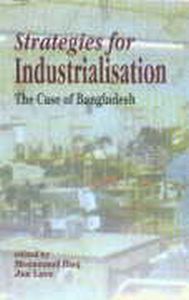
Contents: 1. Bangladesh industrialisation since independence/Mozammel Huq and Jim Love. 2. External competitiveness and economic development/Jim Love. 3. Industrialisation, industrial policy and global competitiveness/Frederick Nixson. 4. Industrial development in a changing global economy/John Henley and Colin Kirkpatrick. 5. Trade liberalisation, exports and growth of manufacturing industries in Bangladesh/Zaid Bakht. 6. Exchange rate fundamentals, misalignment, and economic performance: Bangladesh the South Asian context/Mohammad Yunus. 7. Export promotion through export incentives: the Bangladesh incentive regime in a regional context/Mustafizur Rahman. 8. Technology policy for industrialisation in a developing country: the case of Bangladesh/Mozammel Huq. 9. Intersectoral linkages in Bangladesh/Mohammed Salimullah, Mozammel Huq and Iain McNicoll. 10. Export competitiveness of Bangladesh leather manufacturing: a policy success?/Mozammel Huq. 11. Emergence and growth of the RMG sector in Bangladesh/Debapriya Bhattacharya. Index.
"The volume contains a selection of papers generated in the course of a Link Programme on Industrialisation between the Bangladesh Institute of Development Studies (BIDS) and the University of Strathclyde in Glasgow. In focusing broadly on the strategy of industrialisation, relevant theoretical and empirical issues are brought forward dealing in particular with external competitiveness and economic development. The issue of technological capability building is also extensively analysed. Another important area covered in the book is the identification of inter-sectoral linkages. Trade liberalisation, exchange rate reforms and export promotion obviously form the main instruments of the industrialisation strategy being pursued by Bangladesh. These issues are extensively covered in three separate papers. Two major empirical investigations, examining the dynamics of competitiveness of garments and leather manufacturing are also included.
With the emphasis on liberalisation, it is necessary to address some other critical features of the system, including infrastructural bottlenecks and the problems of governance. An understanding of the issues of market failure is as important as the case of inefficient resource allocation due to policy induced constraints.
The volume brings together an in-depth understanding of the experience of a developing country striving to achieve industrialisation. Therefore, lessons learnt and signals identified can guide the policy makers of Bangladesh and other developing countries." (jacket)